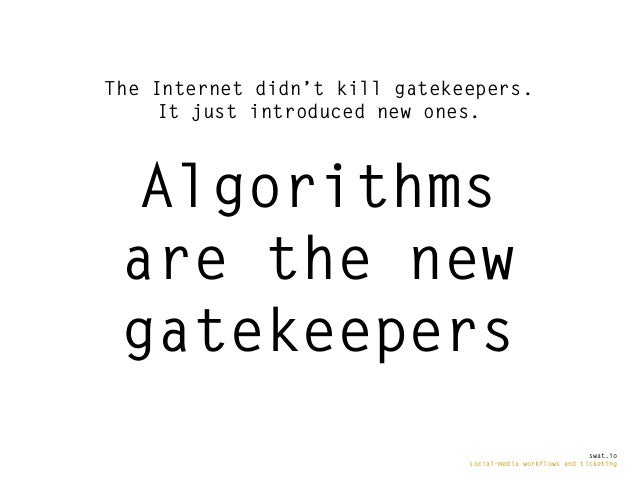
Algorithms–Templates
(or sequence of mental codes) that people use to (a) guide their perception
during exposures, and (b) interpret the meaning of messages in their exposures.
Algorithms are constructions by individuals and are the product of their
experiences filtered through their mental processes of sorting and meaning
making; they are also programmed by the mass media. (Note: In the research
literature, scholars use a variety of terms for these mental guides – schema,
mental models, cognitive maps, and others. Each of these terms has highly
technical meanings, and those meanings often vary across scholars. For those
reasons, I use the term algorithm as a kind of general umbrella term to refer
to all of those meanings.)

1) The filtering task is governed by
algorithms that are programmed by both the individual and the mass media.
2) The algorithms used in the
meaning-matching task are largely definitions that have been provided by
authorities and internalized by the person so their use is automatic. They
require basic competencies to perform well.
3) The algorithms used in the meaning
construction task are largely suggestive guides because meaning construction is
always a partially specified problem. They require the use of higher-order
skills to perform well.

Exposure states The
kind of experiences as person has when encountering media messages. There are
four exposure states: attentional, automatic, transported, and self-reflexive.
These are qualitatively different states that are separated by a liminal
threshold (line of perception).
1) In the attentional state, audience members process message elements
consciously. They actively interact with the element in the messages and can
exercise some control over the processing, which can range from partial to
quite extensive processing.
2) In the automatic state, audience members are not consciously aware of
the exposure. Messages are processed but not consciously or in the immediate
control of the audience member.
3) In the transported state, audience members experience tunnel vision
with a very high level of concentration focused on the message to the point
where the barrier between the message and the audience members disappears: all
stimuli outside of this focus ignored.
4)
In the self – reflexive state, audience members are not only consciously aware
of the elements in the message, but they are also aware of their processing of
those elements.

Information-processing tasks Audiences for mass media messages are
continually engaged in a series of three information – processing tasks of filtering,
meaning matching and meaning construction.
Media exposure Occurs when a person meets the criteria for
physical exposure, perceptual exposure, and physiological exposure. Media
exposure does not require attention on the part of the audience member; that
is, the person can be exposed in non attentional states.
